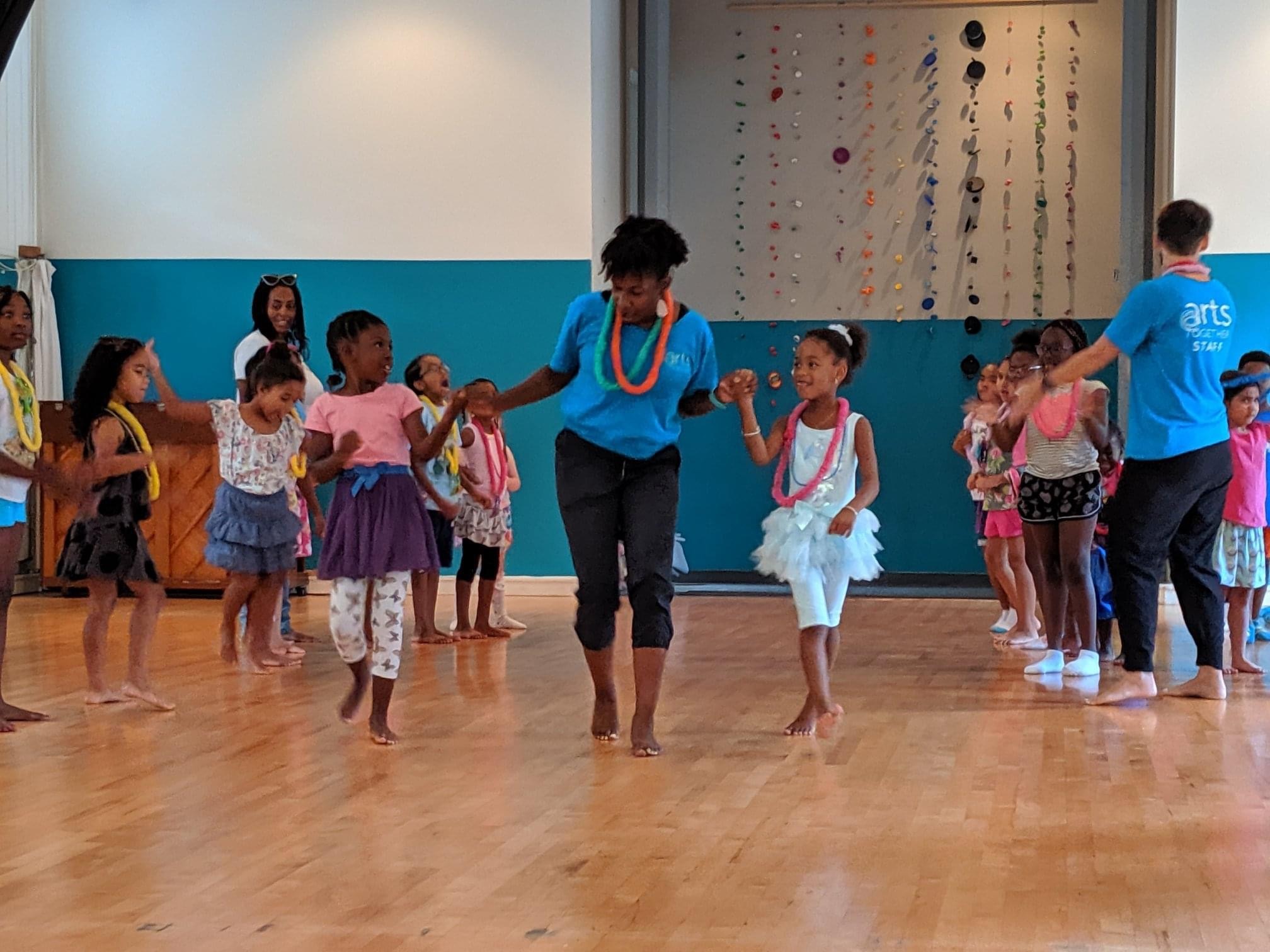
For Ryan Corriston, James Madison University associate professor of dance, “everything about movement relates to play.”
Spending his formative dance years at Anne Green Gilbert’s Seattle-based Creative Dance Center shaped his relationship to play, he says, as did a childhood of sports and “running around in the woods,” along with dancing.
But Corriston says that for many of the collegiate dancers he teaches, especially those with ballet or competitive backgrounds, play may have stopped being a part of their training after early creative-movement classes. After going through middle school and high school, students are afraid of being playful because they tend to focus more on technical details (such as the height of their legs) and are scared of being wrong. And yet a spirit of play can unlock creativity and vulnerability in dancers of any age and style, and could even help them learn better.
Here, four playful teachers weigh in on how to bring play into the studio, even with older and more serious dancers.
Make Students Comfortable
“Before dance students can be playful, you’ll have to make them feel comfortable,” says Danielle Pierce, who teaches creative movement to children (ages 2 to 3) and adolescents, as well as ballet to adults at Collage Dance Center in Memphis. This holds particularly true with older students, who may have an added layer of self-consciousness and resistance to play.
Pierce says that making an intentional effort to get to know her students well helps to create an environment of comfort and trust—so she spends her pre-class time asking them questions about their lives. Both Pierce and Mark Morris Dance Center ballet instructor Richard Glover say that not only does this help make students feel at ease, but it can open up opportunities for play later in class. Because Pierce knows what music her students like, she can play it during an improv session or combination to help them let loose. And whenever Glover sees a student getting too hard on themselves, he encourages them to remember why they started dancing in the first place. Glover also likes to incorporate his students’ interests from outside of class. For instance, he recently taught a student who loved tennis, and had her think about the physicality of her tennis stroke while teaching about the engagement of the upper body in balancé.
Nikki Turner, who teaches at Arts Together in Raleigh, North Carolina, takes this idea even further. On the first day of her classes, she often has each student tell a joke. “By the time they get back to me, we’re all laughing, we’re comfortable,” she says, adding that sometimes she’ll even use the jokes as inspiration for making a phrase.
Corriston feels that creating a nonjudgmental space is essential for getting students comfortable enough to play, which he says is easier said than done at the collegiate level, where there is an expectation of assessment. “I’m intentional about creating an environment where I’m not judging them all the time, where they feel like they can be silly, or make a mistake,” he says. “Yes, there will be some evaluation throughout, but I care about your engagement and your effort and being willing to step out of your comfort zone.” One way he creates this environment of nonjudgment: “Not taking myself too seriously, and demonstrating things that I’m not very good at but trying to work on getting better.”

How to Bring in Play
Use fun imagery: Pierce says that the right image can help older dancers use their imagination and tap into a sense of play. One that recently worked well is telling her ballet students to imagine tea or raindrops trickling down their arm in port de bras.
Make it tangible and sensory: “I like to try to use other senses—smell, taste, touch,” says Turner, whether that’s bringing in a food item that relates to class material, or having students play with slime and then exploring that texture in their movement. She also likes to take her class outside when the weather allows, which she says can encourage freedom and fun in her dancers.
Play with objects: One of Corriston’s go-to ways to get students playing is to incorporate objects into his classes. Sometimes he’ll create an obstacle course that students have to move through, or have students roll around on yoga balls.
Use the music: “Giving combinations that use syncopation or clever musicality can encourage students to get playful in their relationship to the music,” says Glover. Sometimes, he’ll make it a game by calling on a student and asking for a number 1 to 16, and then having dancers hold on that count. He also says that when he occasionally forgoes traditional ballet class music for a pop song, he sees a change in students’ dancing: “They’re turning more, jumping higher.”
Let students lead: Turner’s openness to try anything and her willingness to take student suggestions has earned her the reputation of the “fun teacher.” Pierce, too, pays close attention to what her students want to do, whether that means taking their music requests or allowing an exercise they’re having fun with to run long in lieu of her original plans.
Make connections to the “serious” parts of class: Corriston says that when he has students play some sort of movement game, he’ll often see them expand their physicality. But when they get back to straightforward phrasework, they’ll revert back to familiar habits. When this happens, he’ll remind them to tap back into what it felt like when they were having fun.
Why Play?
“Play is the great equalizer,” says Corriston. “It helps everyone feel like they have something to offer, and what they have is good and valuable. It allows people to feel like there’s not a right or a wrong or a bad. You feel like you can make different choices because you’re not supposed to look like the person next to you.”
Corriston says giving students this space to play is even more important now, when so much of their lives is spent looking at screens. “There’s just less creativity in their life,” he says, and less opportunity to play, even as young adults and children.
For Glover, when students approach ballet with a sense of play, they simply learn better. “The brain absorbs information better in a relaxed environment,” he says. When there’s a sense of play, “the energy in the room changes.”
But perhaps most importantly, play helps students enjoy dance class, says Turner—a worthy goal in itself, as well as one that will increase the chances that they’ll stick with the artform, or learn something truly valuable from it.





